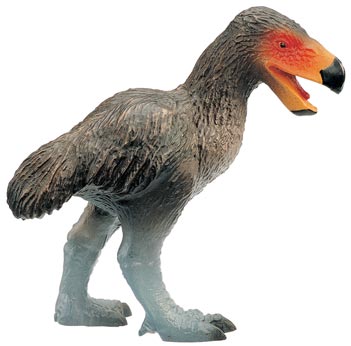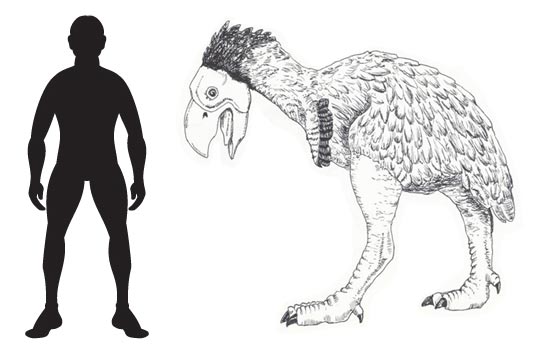The Diatryma/Gastornis Debate
An ancient prehistoric bird – the Diatryma/Gastornis debate. There is some confusion over whether Diatryma and Gastornis are separate genera.
With the demise of the dinosaurs at the end of the Cretaceous, the world was suddenly devoid of large vertebrates. As the Earth’s climate warmed and became more humid extensive rain-forests dominated the flora even into high latitudes such as USA/Canadian border, but vertebrate lifeforms were taking their time in bouncing back from the mass extinction event that signalled the end of the Mesozoic. It was the birds that took over the mantle of top predators in the Palaeocene.
Although the mammals were rapidly diversifying, nearly all the mammal families that were evolving, were dominated by small species. One of the reasons for this suggested by scientists is that with dense jungle dominating the mid latitudes any mammals evolving were restricted in size by the lack of space in the tropical rain-forests.
Diatryma/Gastornis Debate
In the northern latitudes, the continents of the Earth had formed one single, large landmass representing what was to become Europe, North America and parts of Asia as sea levels fell. Large 2-metre-tall flightless birds dominated the food chains. Animals such as Gastornis from Europe and Diatryma from the United States roamed the primeval forests. However, there remains some confusion over whether Diatryma and Gastornis are separate genera.
A Model of the “Terror Bird” Diatryma or should that be Gastornis

Picture credit: Everything Dinosaur
The imprint of a single femur of a giant bird from the famous Messel shales plus other material from Geiseltal led to the naming and describing of one genus of predatory, flightless, bird Gastornis. These fossils were all found in Germany and as a result of these discoveries Gastornis was named and described. This took place in the mid 1850s. However, the fossil material associated with this bird remains fragmentary.
A Scale Drawing of Gastornis/Diatryma
Picture credit: Everything Dinosaur
The first complete skeleton of the giant Palaeocene bird that was to become known as Diatryma was found in Wyoming in the 1870s. The fragmentary fossils associated with Gastornis had been incorrectly reconstructed so very few scientists at the time noticed the similarities between Diatryma and the previously named Gastornis. As more fossils of giant birds have been found and the anatomy of these large birds better understood so scientists have shown that the European Gastornis was almost identical to the North American Diatryma. Many palaeontologists believe that the two scientific names apply to the same genus. If this theory is accepted then the first name Gastornis will take precedence and the name Diatryma will be abandoned.
To view the prehistoric animal models available from Everything Dinosaur: Prehistoric Animal Models.







Leave A Comment